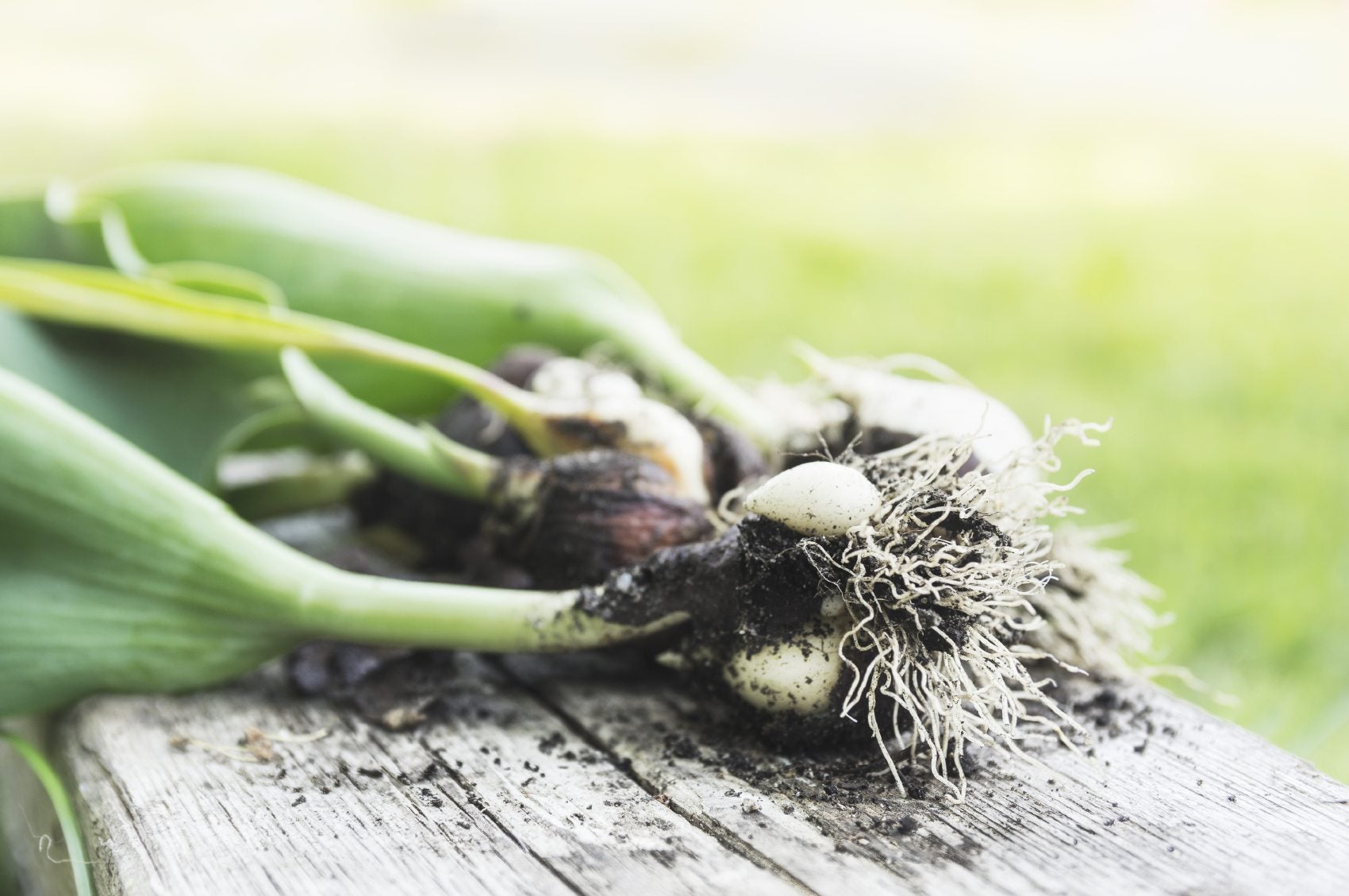When To Dig Up Tulips: How To Cure Tulip Bulbs For Planting


Tulips are special – ask any gardener who grows the bright, beautiful blossoms. That’s why it’s no surprise that the care requirements for tulip bulbs are different than for other spring bulbs. There are over 150 different species of tulip, each with its own charms. Many are perennial, and the bulbs can be harvested every year. Digging up tulip bulbs means storing tulip bulbs until you replant them. If you want to learn about storing tulip bulbs and how to cure tulip bulbs, read on.
Do You Have to Dig Up Tulip Bulbs?
No law requires gardeners to dig up tulip bulbs each year, or at all. In fact, most bulbs prefer to stay in the ground, and, left in place, rebloom the following year. Gardeners only dig up tulip bulbs when the plants seem less vigorous and offer fewer flowers, which can indicate overcrowding. If you feel that your tulips aren’t doing as well as they did last year, dig them up. But before you do, find out when to dig up tulips. It is better not to dig bulbs up at all than to dig them up at the wrong time.
When to Dig Up Tulips?
When to dig up tulips is just as important as how to dig them up. Digging tulips prematurely can kill them. If you want to dig up tulip bulbs, don’t be in a hurry. Even though the plants lose visual appeal once the flowers start to fade, do not get out the shovel yet. Tulips flower in spring and, by early summer, their bright blooms are wilting. You can go ahead and deadhead the unsightly blooms, but wait until the foliage yellows to dig up bulbs. A tulip bulb contains not only the tiny plant but also all the nutrition that the plant needs to make it through the winter and bloom the following spring. Once tulips finish flowering, they use their leaves and roots to gather nutrients and fill up the storage containers with supplies. Digging the bulb up too early means that the bulbs will not have had a chance to replenish their nutrient supplies. Only dig out the bulbs when you see the leaves of the plants turning yellow and wilting.
Digging Up and Curing Tulip Bulbs
Be careful when you dig up your bulbs. Use a hand trowel to dig a trench about 8 inches (20.5 cm.) deep around your tulip plant. Make the trench several inches (5 to 10 cm.) larger than the plant to prevent hurting the bulbs. With your fingers, lift out the bulbs and brush off the dirt, then remove dead foliage with a scissor or pruner. Curing tulip bulbs is not difficult. If you want to learn how to cure tulip bulbs, simply fill a box or plastic container with sand or peat. Press each bulb into the material until about three-quarters of it is beneath the surface. Don’t let the bulbs touch each other and do not add water. Place the box in an area with a temperature between 60 and 66 degrees Fahrenheit (15 to 18 C.). You can use a protected outdoor area or the lower shelf of the refrigerator. The key is not to allow much sunshine into the area you are storing tulip bulbs. Leave the box in the cool area until autumn. That’s how to cure tulip bulbs. In fall, separate the bulbs, if necessary, and plant them in a bed enriched with organic compost before the first frost. Water them regularly until winter arrives and they go dormant.
Sign up for the Gardening Know How newsletter today and receive a free copy of our e-book "How to Grow Delicious Tomatoes".

Teo Spengler is a master gardener and a docent at the San Francisco Botanical Garden, where she hosts public tours. She has studied horticulture and written about nature, trees, plants, and gardening for more than two decades, following a career as an attorney and legal writer. Her extended family includes some 30 houseplants and hundreds of outdoor plants, including 250 trees, which are her main passion. Spengler currently splits her life between San Francisco and the French Basque Country, though she was raised in Alaska, giving her experience of gardening in a range of climates.